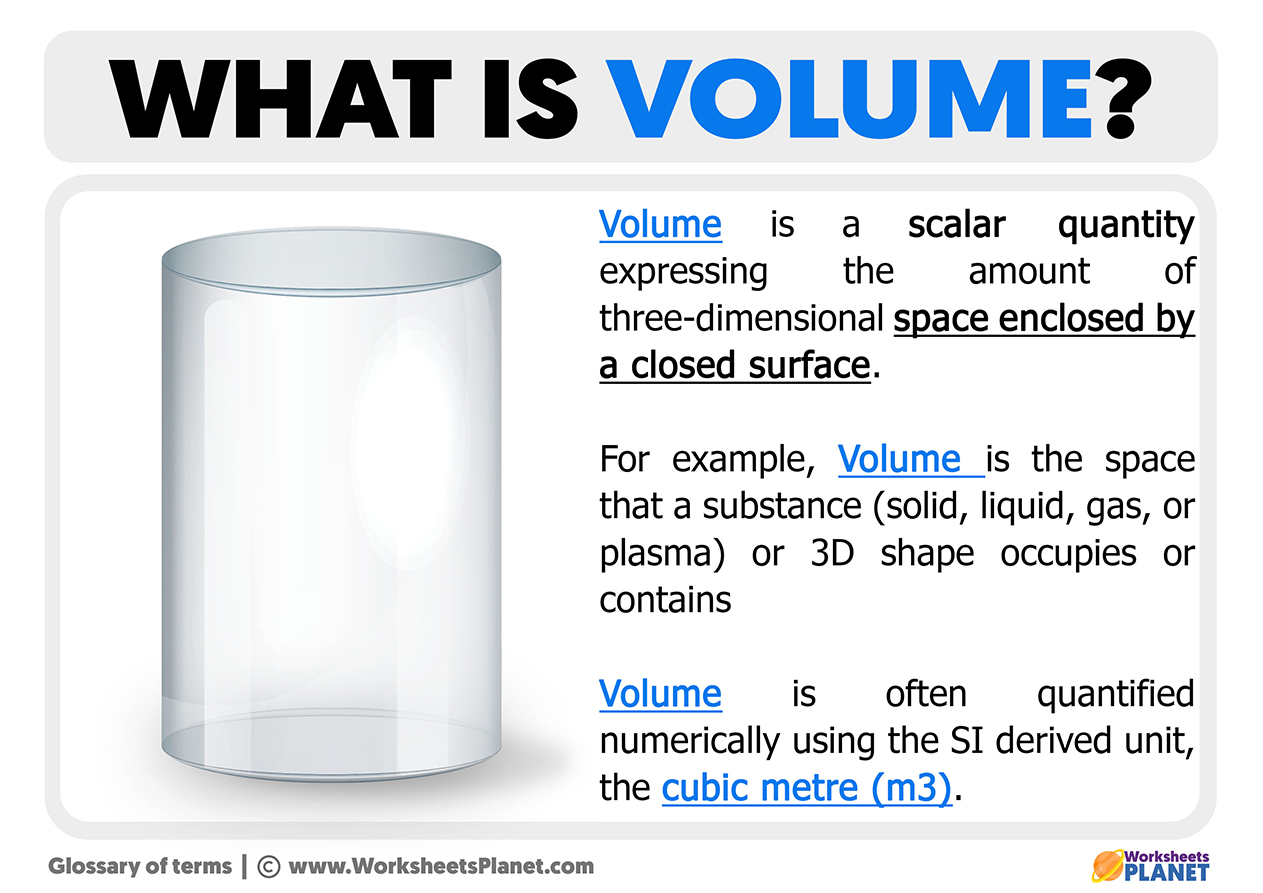Volume is a scalar physical quantity that expresses the three-dimensional space occupied by a body. It is a derived quantity formed by the dimension of length raised to the cube [L]3, for which the units of volume are:
- In the International System of Units: cubic meters (m3)
- In the English system: cubic feet (ft3)
- In the CGS system: cubic centimeters (cm3)

In general, any cubed length is used to express a volume, for example, cubic inches (in3), cubic yards (yd3), cubic millimeters (mm3), cubic kilometers (km3), etc.; whether it is a solid, liquid or gaseous substance.
As for the physical properties of substances, these can be intensive or extensive, and in terms of volume, it is an extensive quantity. Its value depends on the amount of matter.
On the other hand, from a practical point of view, the volume is considered an indirect measurement since its value determine equations that involve two or more direct measurements, which are determined with instruments to measure length, for example, to calculate the volume of a cylinder with a circular base, no instrument directly serves to measure this volume, instead, its height and diameter are measured, and these values are substituted in the formula for calculating the volume of a cylinder.

